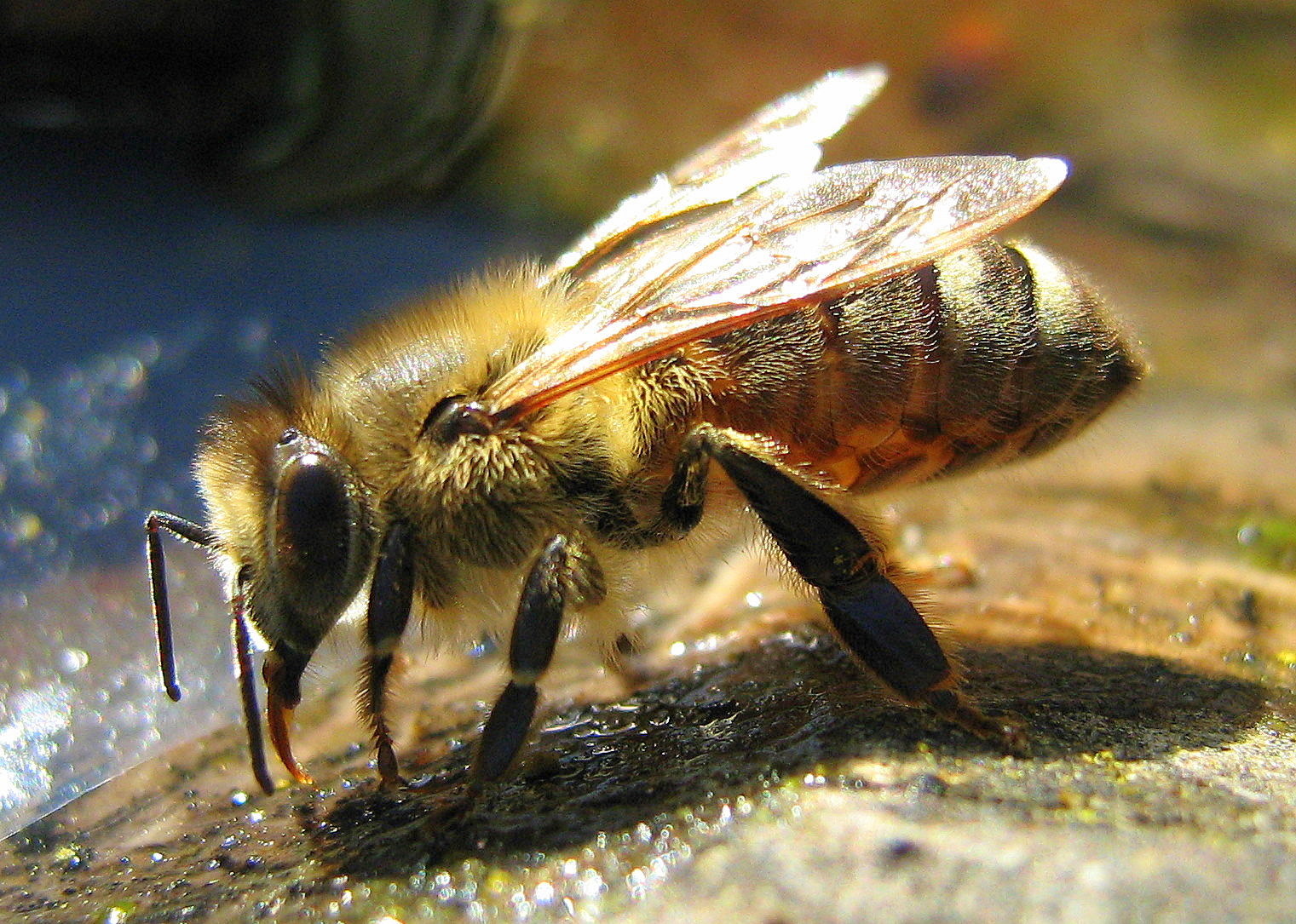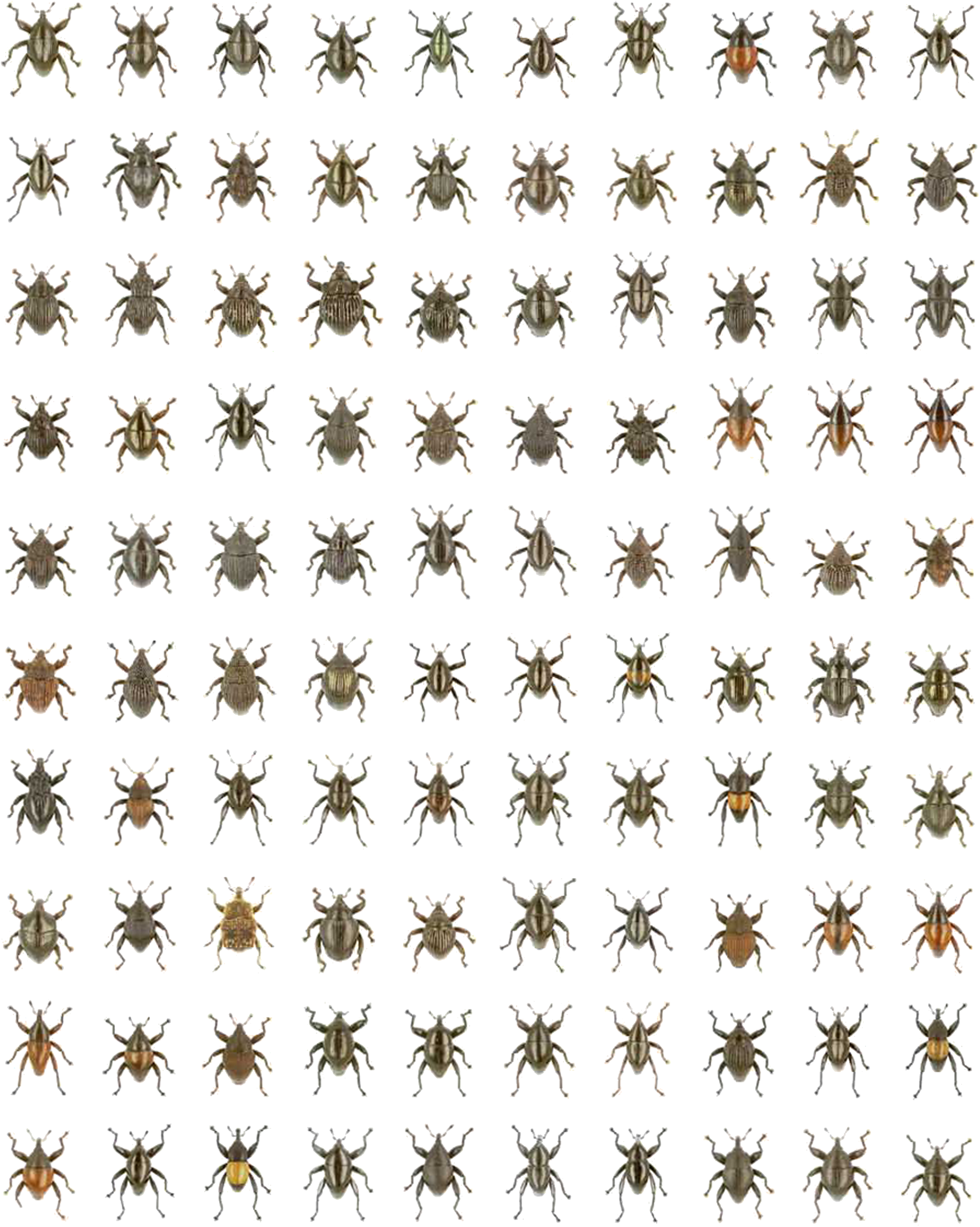|
Apiology
Melittology (from Greek , ''melitta'', "bee"; and ''-logia'') is a branch of entomology concerning the scientific study of bees. It may also be called apicology. Melittology covers the species found in the clade Anthophila within the superfamily Apoidea, comprising more than 20,000 species, including bumblebees and honey bees. Subdivisions * Apiology – (from Latin , "bee"; and Ancient Greek , ''-logia'') is the scientific study of honey bees. Honey bees are often chosen as a study group to answer questions on the evolution of social systems. :* Apidology is a variant spelling of ''apiology'' used outside of the Western Hemisphere, primarily in Europe; it is sometimes used interchangeably with ''melittology''. Melittological societies Melittologists and apiologists are served by a number of scientific societies, both national and international in scope. Their main role is to encourage the study of bees and apicultural research. * '' International Bee Research Association'' ... [...More Info...] [...Related Items...] OR: [Wikipedia] [Google] [Baidu] |
Entomology
Entomology () is the scientific study of insects, a branch of zoology. In the past the term "insect" was less specific, and historically the definition of entomology would also include the study of animals in other arthropod groups, such as arachnids, myriapods, and crustaceans. This wider meaning may still be encountered in informal use. Like several of the other fields that are categorized within zoology, entomology is a taxon-based category; any form of scientific study in which there is a focus on insect-related inquiries is, by definition, entomology. Entomology therefore overlaps with a cross-section of topics as diverse as molecular genetics, behavior, neuroscience, biomechanics, biochemistry, systematics, physiology, developmental biology, ecology, morphology, and paleontology. Over 1.3 million insect species have been described, more than two-thirds of all known species. Some insect species date back to around 400 million years ago. They have many kinds of ... [...More Info...] [...Related Items...] OR: [Wikipedia] [Google] [Baidu] |
Melissopalynology
Melissopalynology is the study of pollen contained in honeyHarmonized methods of melissopalynology Werner VON DER OHE, Livia PERSANO ODDO, Maria Lucia PIANA, Monique MORLOT, Peter MARTIN, 2004 and, in particular, the pollen's source. By studying the pollen in a sample of honey, it is possible to gain evidence of the geographical location and of the plants that the s visited, although honey may also contain airborne pollens from ... [...More Info...] [...Related Items...] OR: [Wikipedia] [Google] [Baidu] |
Entomology
Entomology () is the scientific study of insects, a branch of zoology. In the past the term "insect" was less specific, and historically the definition of entomology would also include the study of animals in other arthropod groups, such as arachnids, myriapods, and crustaceans. This wider meaning may still be encountered in informal use. Like several of the other fields that are categorized within zoology, entomology is a taxon-based category; any form of scientific study in which there is a focus on insect-related inquiries is, by definition, entomology. Entomology therefore overlaps with a cross-section of topics as diverse as molecular genetics, behavior, neuroscience, biomechanics, biochemistry, systematics, physiology, developmental biology, ecology, morphology, and paleontology. Over 1.3 million insect species have been described, more than two-thirds of all known species. Some insect species date back to around 400 million years ago. They have many kinds of ... [...More Info...] [...Related Items...] OR: [Wikipedia] [Google] [Baidu] |
Drinking Bee
Drinking is the act of ingesting water or other liquids into the body through the mouth, proboscis, or elsewhere. Humans drink by swallowing, completed by peristalsis in the esophagus. The physiological processes of drinking vary widely among other animals. Most animals drink water to maintain bodily hydration, although many can survive on the water gained from their food. Water is required for many physiological processes. Both inadequate and (less commonly) excessive water intake are associated with health problems. Methods of drinking In humans When a liquid enters a human mouth, the swallowing process is completed by peristalsis which delivers the liquid through the esophagus to the stomach; much of the activity is abetted by gravity. The liquid may be poured from the hands or drinkware may be used as vessels. Drinking can also be performed by acts of inhalation, typically when imbibing hot liquids or drinking from a spoon. Infants employ a method of suction ... [...More Info...] [...Related Items...] OR: [Wikipedia] [Google] [Baidu] |
International Bee Research Association
The International Bee Research Association is a charity based in the United Kingdom which exists to promote the value of bees and provide information on bee science and beekeeping Beekeeping (or apiculture) is the maintenance of bee colonies, commonly in man-made beehives. Honey bees in the genus ''Apis (insect), Apis'' are the most-commonly-kept species but other honey-producing bees such as ''Melipona'' stingless bees ar ... worldwide. It was founded in 1949 as the Bee Research Association. It regularly publishes two journals: ''Bee World'' and ''Journal of Apicultural Research''. References External links * {{bee-stub Beekeeping organizations Beekeeping in the United Kingdom Charities based in Wales Agricultural organisations based in the United Kingdom 1949 establishments in the United Kingdom Organizations established in 1949 ... [...More Info...] [...Related Items...] OR: [Wikipedia] [Google] [Baidu] |
Bees
Bees are winged insects closely related to wasps and ants, known for their roles in pollination and, in the case of the best-known bee species, the western honey bee, for producing honey. Bees are a monophyletic lineage within the superfamily Apoidea. They are presently considered a clade, called Anthophila. There are over 16,000 known species of bees in seven recognized biological families. Some speciesincluding honey bees, bumblebees, and stingless beeslive socially in colonies while most species (>90%)including mason bees, carpenter bees, leafcutter bees, and sweat beesare solitary. Bees are found on every continent except Antarctica, in every habitat on the planet that contains insect-pollinated flowering plants. The most common bees in the Northern Hemisphere are the Halictidae, or sweat bees, but they are small and often mistaken for wasps or flies. Bees range in size from tiny stingless bee species, whose workers are less than long, to '' Megachile pluto'' ... [...More Info...] [...Related Items...] OR: [Wikipedia] [Google] [Baidu] |
I Have A Bee
I Have a Bee (IHAB) is a worldwide organization established for hobby beekeepers. The organization hopes to deliver sustainable and long-term solutions to the pollinator decline through the hobby of beekeeping. Founded by Petar Petrov, Stefan Zlatev and Trifon Michailov 2014 in Bulgaria. The group has examined the roots of traditional beekeeping and found that individual farms tended to keep only a few hives each—in contrast with today's commercial beekeeping model, in which a single apiary consists of hundreds of hives. The founders believe that this practice is the cause of the pollinator decline. The IHAB was created to imitate the old beekeeping model and allow a more even distribution of bees. History In 2013, IHAB introduced their first development of a top bar hive. The product was designed to make it easier and more convenient for an average person to raise bees. The top bar hive has the convenience of being usable in backyards or on city terraces. In 2015, IHAB, Nor ... [...More Info...] [...Related Items...] OR: [Wikipedia] [Google] [Baidu] |
Beekeeping
Beekeeping (or apiculture) is the maintenance of bee colonies, commonly in man-made beehives. Honey bees in the genus ''Apis (insect), Apis'' are the most-commonly-kept species but other honey-producing bees such as ''Melipona'' stingless bees are also kept. Beekeepers (or apiarists) keep bees to collect honey and other products of the hive: beeswax, propolis, bee pollen, and royal jelly. Pollination of crops, raising Queen bee, queens, and production of package bees for sale are other sources of beekeeping income. Bee hives are kept in an apiary or "bee yard". The keeping of bees by humans, primarily for honey production, began around 10,000 years ago. Georgia (country), Georgia is known as the "cradle of beekeeping" and the oldest honey ever found comes from that country. The 5,500-year-old honey was unearthed from the grave of a noblewoman during archaeological excavations in 2003 near the town Borjomi. Ceramic jars found in the grave contained several types of honey, including ... [...More Info...] [...Related Items...] OR: [Wikipedia] [Google] [Baidu] |
Honey Bee
A honey bee (also spelled honeybee) is a eusocial flying insect within the genus ''Apis'' of the bee clade, all native to Afro-Eurasia. After bees spread naturally throughout Africa and Eurasia, humans became responsible for the current cosmopolitan distribution of honey bees, introducing multiple subspecies into South America (early 16th century), North America (early 17th century), and Australia (early 19th century). Honey bees are known for their construction of perennial colonial nests from wax, the large size of their colonies, and surplus production and storage of honey, distinguishing their hives as a prized foraging target of many animals, including honey badgers, bears and human hunter-gatherers. Only eight surviving species of honey bee are recognized, with a total of 43 subspecies, though historically 7 to 11 species are recognized. Honey bees represent only a small fraction of the roughly 20,000 known species of bees. The best known honey bee is the western h ... [...More Info...] [...Related Items...] OR: [Wikipedia] [Google] [Baidu] |
Federation Of Irish Beekeepers' Associations
Beekeeping has been practised in Ireland for close to 1,500 years since bees were imported. It has seen a surge in popularity in modern times, with the membership of beekeeping associations exceeding 4,500. The median average number of hives per beekeeper is three hives, while the average honey output per hive is 11.4 kg. The growth in the practise has occurred despite increased pressures on bees and beekeepers due to parasites, diseases and habitat loss. History Honey bees were imported into Ireland, presumably from Britain, sometime after the 3rd century AD when Solinus mentioned that Ireland (Hibernia) had no bees. Some beekeepers have claimed that honey bees could have arrived across a post-glacial land bridge between Britain and Ireland, however this theory began to be refuted by a consensus within the academic community starting in 1983. Since 2006, the idea of a land bridge has been discredited based upon computer models and marine geological evidence. The earl ... [...More Info...] [...Related Items...] OR: [Wikipedia] [Google] [Baidu] |
German Beekeepers Association
The German Beekeepers Association, "Deutscher Imkerbund", (DIB) is the umbrella organization of German beekeepers based in Wachtberg, Germany Germany,, officially the Federal Republic of Germany, is a country in Central Europe. It is the second most populous country in Europe after Russia, and the most populous member state of the European Union. Germany is situated betwe .... It was founded in 1907 for the purpose of promoting beekeeping and marketing of local honey under the trademark Genuine German honey. References External linksOfficial Website {{Authority control Beekeeping organizations [...More Info...] [...Related Items...] OR: [Wikipedia] [Google] [Baidu] |







